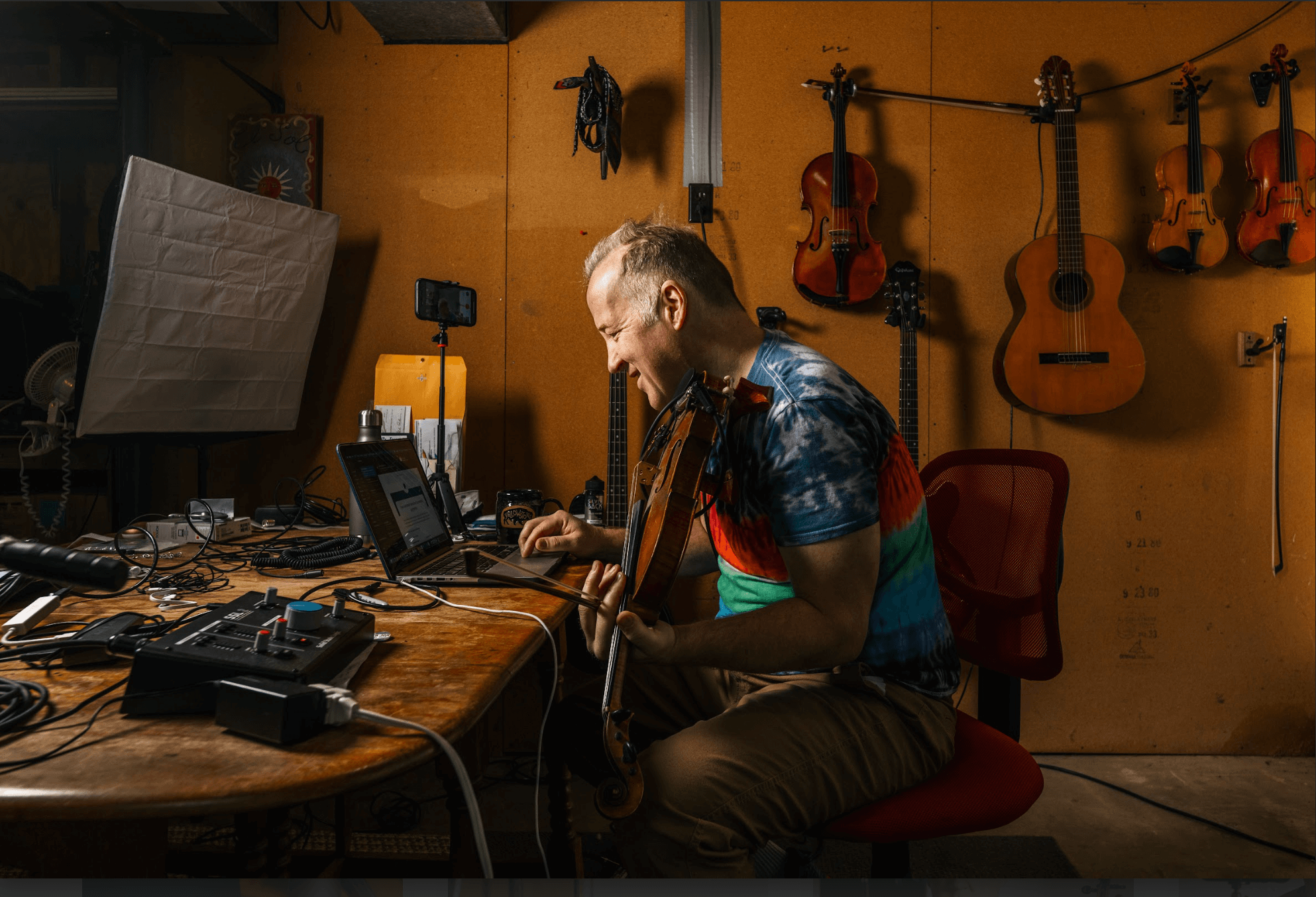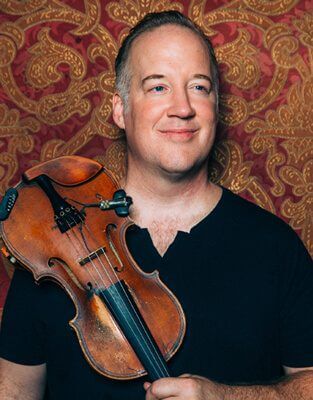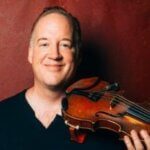I received a question from a Creative Strings Academy member about how to use loop pedals to practice and create more music in his daily life.
His question:
“I was wondering if a looper could help fill in the gaps for me. You lay down a bass track, then some comping and maybe some harmony and then practice jamming with the loops. Can you do that with jazz standards as well?”
In short, “yes”.
In this loop pedal tutorial video:
- The TWO buttons you need to know
- The first loop you should practice
- Why people Actually struggle with looping (it has nothing to do with technology)
- How to choose the right loop pedal for you. Watch it here:
Table of Contents
As I stated in the video, the main struggle people have is unrelated to tech.
The problem is related to understanding How to Arrange. Specifically, how to figure out your bass part, your chordal accompaniment, the groove, the solo improvisation, and/or countermelodies.
To learn all of this step by step,
- Subscribe to the Academy, grab our course on Easy Tonal Improvisation,
- Or join me to my in-person retreat.
1) Your first part of any loop should express subdivisions without leaving long silences.
The first loop could be a walking bass line, or any bass line that is busy enough to feel constant subdivisions.
You could also choose an ostinato, moving countermelody, inner voices pattern, or percussive groove, especially if the bass line has very little activity or motion.
In the video below my bass line is less active, so I used a strumming pattern as the first loop. Listen for a constant strumming pattern that clearly denotes regular 16th note subdivisions. The bass line, which is much more spacious, was laid down after the strumming pattern:
The reason for starting with regular subdivisions is that our mind processes time in small chunks. We can’t process or measure notes with a long duration (such as whole notes at 60 BPM). At 60 BPM, most people need to hear regular quarter notes in order to stay together and groove solidly. This is the same reason that in a string quartet or orchestra everyone listens to whichever instrument is playing the subdivisions at any given time to stay together.
The video below contains a loop over Gnarls Barkley’s “Crazy” that starts with a bass line. You’ll notice that the bass line is very regula”, accounting for at least every quarter note. I kept the amount of parts in the loop to a minimum (three), in order to hurry up and get to the melody, so that listeners wouldn’t lose interest during the loop setup. This is one of my most popular loop performances because it gets really loose and crazy towards the end.
2) Use loops to improvise over simple or complex forms
You can start with simple forms, such as one-bar vamps. This is great practice and can be lots of fun. After you get good at it, you may find it more challenging and rewarding to play longer forms. I like to play full song forms. e.g., a 32 bar jazz standard, a 12 bar blues, or a verse and chorus of a pop tune. Sometimes, as in the case of the cover tune above, I omit the chorus to avoid long setups.
It can be tricky to keep it interesting for the listener when using longer forms because of the time it takes for the loop setup. There are different ways around this. The Boomerang looper, for example, has different “modes” to enable you to create all kinds of different loops at once. I use the most basic looping modes and try to be creative in finding ways to change up the songs so that it’s not always the same old thing on each song (especially if I’m doing a long solo concert). I’ve found the Boss RC-30 and the Jamman both to be excellent. Nowadays I use the Boss RC-300. Visit or CALL Electric Violin Shop to speak with a human there. They are awesome at helping people with questions over the phone.
3) For additional gear, I recommend you get a multi-effects pedal like the Boss ME-70
(Also available at Electric Violin Shop) and utilize the Octave feature to expand your range and cover a wide range of registers to illustrate an “orchestral” palette or texture. Similarly, you can use different effects (tastefully) to have different timbres of sound so the loop doesn’t sound like 7 layers of the same sound in the same register.
A bassist can use the 8va octave to cover melodic range and a violinist can use the 8vb to cover lower/bass range. You could also accomplish this with SOFTWARE and run it through your laptop. Adam Spiers has a blog explaining how to do it for free. In the future I believe more musicians will be running software for loops and signal processing through their computers, iPads, or phones, because it will be less expensive, harder to break, and easier to carry. In this case, you’ll still need a pedal. I’ve heard about a few out there including one called the “soft step”. Cellist Dana Leong uses a signal processing setup through his laptop in conjunction with his Yamaha electric cello.
Looping is great for:
1) Practice – improve rhythm, learn all the parts of a song (bass line, inner voices, countermelody, groove), improvise
2) Teach – drilling melodic lines with students, call and response, creating rhythmic backdrop to facilitate ensemble playing
3) Performance – save the cost of additional band members; dictate the direction of the music. I like to use a loop pedal when performing duo, such as with Camille in this version of Dark Eyes
If this was helpful to you, and you’d like to go deeper into the process, consider setting up a one-time free private lesson with me. You can do that by starting my home study course here: Creative Strings Academy.
****If you are economically disadvantaged or if you are experiencing financial hardship, we want to provide this program for you at a price you can pay. Simply email my assistant Josue at info@creativestrings.org and we will figure out a way to accommodate you.






